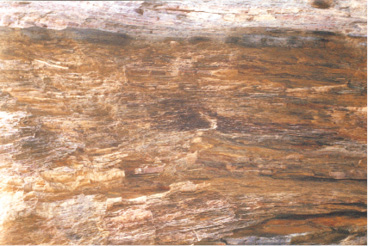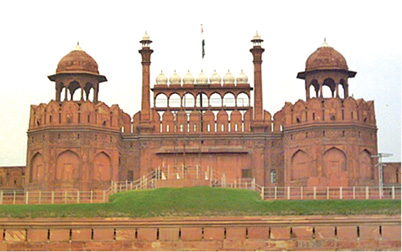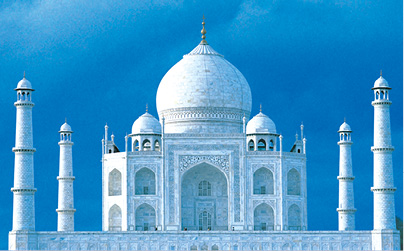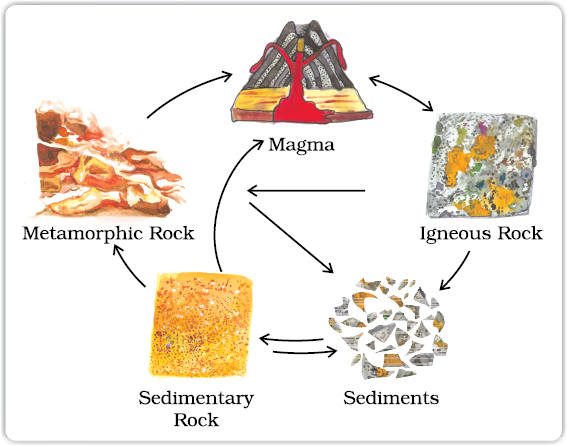Table of Contents

The earth, our homeland is a dynamic planet. It is constantly undergoing changes inside and outside. Have you ever wondered what lies in the interior of the earth? What is the earth made up of?
• The deepest mine in the world, is in South Africa. It is about 4 km. deep. In search for oil engineers have dug a hole about 6 km. deep.
• To reach to the centre of the earth (which is not possible!) you will have to dig a hole 6000 km. deep on the ocean floor.
Interior of the Earth
Just like an onion, the earth is made up of several concentric layers with one inside another (Fig. 2.1). The uppermost layer over the earth’s surface is called the crust. It is the thinnest of all the layers. It is about 35 km. on the continental masses and only 5 km. on the ocean floors.

Fig. 2.1: Interior of the Earth
The main mineral constituents of the continental mass are silica and alumina. It is thus called sial (si-silica and al-alumina). The oceanic crust mainly consists of silica and magnesium; it is therefore called sima (si-silica and ma-magnesium) (Fig. 2.2).
Just beneath the crust is the mantle which extends up to a depth of 2900 km. below the crust. The innermost layer is the core with a radius of about 3500 km. It is mainly made up of nickel and iron and is called nife (ni – nickel and fe – ferrous i.e. iron). The central core has very high temperature and pressure.

Fig. 2.2: Continental Crust and Oceanic Crust
Rocks and Minerals
The earth’s crust is made up of various types of rocks. Any natural mass of mineral matter that makes up the earth’s crust is called a rock. Rocks can be of different colour, size and texture.
There are three major types of rocks: igneous rocks, sedimentary rocks and metamorphic rocks.
When the molten magma cools, it becomes solid. Rocks thus formed are called igneous rocks. They are also called primary rocks. There are two types of igneous rocks: intrusive rocks and extrusive rocks.
• The crust forms only 1 per cent of the volume of the earth, 84 per cent consists of the mantle and 15 per cent makes the core.
• The radius of the earth is 6371 km.
Word Origin
Igneous: Latin word Ignis meaning fire.
Sedimentary: Latin word sedimentum meaning settle down.
Metamorphic: Greek word metamorphose meaning change of form.
Glossary
Fossils: The remains of the dead plants and animals trapped in the layers of rocks are called fossils.
Can you imagine lava coming out from the volcanoes? Lava is actually fiery red molten magma coming out from the interior of the earth on its surface. When this molten lava comes on the earth’s surface, it rapidly cools down and becomes solid. Rocks formed in such a way on the crust are called extrusive igneous rocks. They have a very fine grained structure. For example, basalt. The Deccan plateau is made up of basalt rocks. Sometimes the molten magma cools down deep inside the earth’s crust. Solid rocks so formed are called intrusive igneous rocks. Since they cool down slowly they form large grains. Granite is an example of such a rock. Grinding stones used to prepare paste/powder of spices and grains are made of granite.
Rocks roll down, crack, and hit each other and are broken down into small fragments. These smaller particles are called sediments. These sediments are transported and deposited by wind, water, etc. These loose sediments are compressed and hardened to form layers of rocks. These types of rocks are called sedimentary rocks. For example, sandstone is made from grains of sand. These rocks may also contain fossils of plants, animals and other micro-organisms that once lived on them.
Igneous and sedimentary rocks can change into metamorphic rocks under great heat and pressure (Fig. 2.3). For example, clay changes into slate and limestone into marble.

Fig. 2.3: Sedimentary rock turned into a Metamorphic rock
Rocks are very useful to us. The hard rocks are used for making roads, houses and buildings. You use stones in many games. For example, seven stones (pitthoo), hop-scotch (stapu/kit kit), five stones (gitti). Find out some more such games by asking your grand parents, parents, neighbours, etc.
Collect pictures of some monuments and find out which are the rocks used to build them. Two pictures have been collected for you.

The Red Fort is made of red sandstone

The Taj Mahal is made of white marble
You will be surprised to know that one type of rock changes to another type under certain conditions in a cyclic manner. This process of transformation of the rock from one to another is known as the rock cycle. You have already learnt when the molten magma cools; it solidifies to become igneous rock. These igneous rocks are broken down into small particles that are transported and deposited to form sedimentary rocks. When the igneous and sedimentary rocks are subjected to heat
and pressure they change into metamorphic rocks. The metamorphic rocks which are still under great heat and pressure melt down to form molten magma. This molten magma again can cool down and solidify into igneous rocks (Fig. 2.4).
Rocks are made up of different minerals. Minerals are naturally occurring substances which have certain physical properties and definite chemical composition. Minerals are very important to humankind. Some are used as fuels. For example, coal, natural gas and petroleum. They are also used in industries – iron, aluminium, gold, uranium, etc, in medicine, in fertilisers, etc.

Fig. 2.4: Rock Cycle
What are the minerals found in your state?
Collect some samples to show in your class.

1.Answer the following questions.
(i) What are the three layers of the earth?
(ii) What is a rock?
(iii) Name three types of rocks.
(iv) How are extrusive and intrusive rocks formed?
(v) What do you mean by a rock cycle?
(vi) What are the uses of rocks?
(vii) What are metamorphic rocks?
2. Tick the correct answer.
(i) The rock which is made up of molten magma is
(a) Igneous (b) Sedimentary (c) Metamorphic
(ii) The innermost layer of the earth is
(a) Crust (b) Core (c) Mantle
(iii) Gold, petroleum and coal are examples of
(a) Rocks (b) Minerals (c) Fossils
(iv) Rocks which contain fossils are
(a) Sedimentary rocks
(b) Metamorphic rocks
(c) Igneous rocks
(v) The thinnest layer of the earth is
(a) Crust (b) Mantle (c) Core
3. Match the following.
(i) Core (a) Earth’s surface
(ii) Minerals (b) Used for roads and buildings
(iii) Rocks (c) Made of silicon and alumina
(iv) Clay (d) Has definite chemical composition
(v) Sial (e) Innermost layer
(f) Changes into slate
(g) Process of transformation of the rock
4. Give reasons.
(i) We cannot go to the centre of the earth.
(ii) Sedimentary rocks are formed from sediments.
(iii) Limestone is changed into marble.
5. For fun.
(i) What are the minerals most commonly used in the following objects?
(ii) Identify some more objects made up of different minerals.

